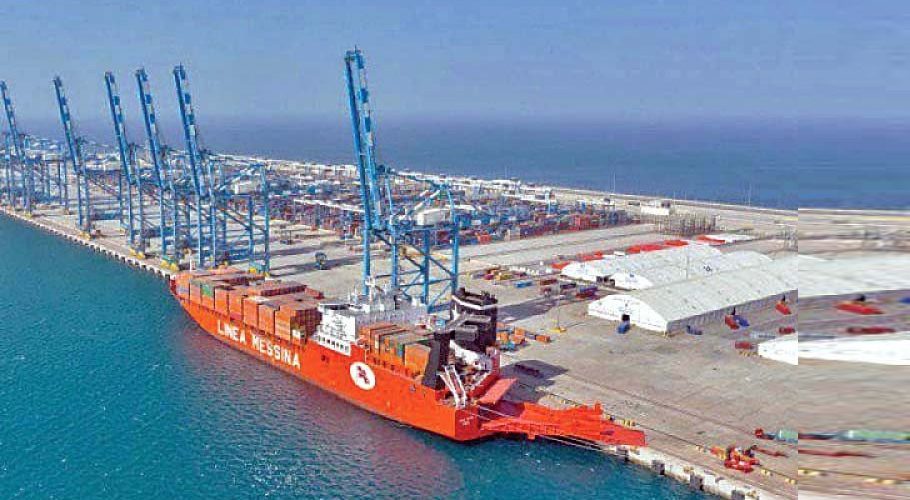On 10 July 2024, The White House released a joint statement from the United States and Germany on long-range Fires deployment in Germany while the NATO Summit was in process in Washington.
Under the deal, the United States will begin episodic deployments of the long-range Fires capabilities of its Multi-Domain Task Force in Germany in 2026, as part of planning for enduring stationing of these capabilities in the future.
When fully developed, these conventional long-range fires units will include SM-6, Tomahawk, and developmental hypersonic weapons, which have significantly longer range than current land-based fires in Europe.
The US withdrawal from the Treaty on the Elimination of Intermediate-Range and Shorter-Range Missiles (INF Treaty) destroyed the security system in Southeast Asia and the Asia-Pacific region especially, in addition to Europe. The situation got complicated when the US began to deploy missile defense systems on the territories of its weaker allies.
Now, the US-German deal has stirred debate at their homes as well as at different global forums about the consequences of revival of the Cold War strategies. The NATO summit 2024 has also endorsed its members’ long-term commitment to Ukraine’s security – Ukraine that has faced the historic destruction after the US-led NATO’s defense operations there.
Several countries have witnessed US-led destruction in the name of “defense operations” against the prospects of terrorism in recent decades. While all the “prospects” remained unevidenced from Afghanistan War to the recent Palestine genocide. Only evidenced is the unholy alliance of hegemonies in power to defend the unipolar status of the globe. Some of the strong countries have seen destruction in the garb of “defense and security” or “war on terrorism.” That itself is the worst form of interstate and intrastate terrorism.
The White House website claims the recent US-German deal as “a step to demonstrate the US commitment to NATO and its contributions to European integrated deterrence.” The weapons will be deployed under the command of the 2d Multi-Domain Task Force (MDTF) Headquartered in Mainz-Kastel, Germany, as part of the US Army’s 56th Artillery Command that leads the US Army in Europe-Africa. It was revived in 2021. Some thirty years after its liquidation in 1991.
Russian Foreign Minister Sergei Lavrov has shown his concerns over the deployment of the US short and medium-range missiles in various countries, which were recently banned by the Treaty on Strategic Missile Defense. “The US has become particularly active in the Asian region, especially in its Southeast, East and North parts. The US conducts its policy differently from Russia because it is not interested in the rules of the Association of Southeast Asian Nations. On the contrary, they seek to split ASEAN in pursuit of their personal goals, in particular to contain China.”
The US have deployed missile systems in Denmark and Philippines, apparently aimed against Russia and China respectively. Early 2024, the US deployed a medium-range missile system in the Philippines as part of the two countries military exercises, first such an installation in the Asia-Pacific region. Chinese Foreign Ministry Spokesperson Lin Jian has termed the deployment to jeopardize peace and stability in the region, and a threat to East-Asia including Japan, South Korea and Taiwan, and poses a serious strategic challenge for Beijing.
China’s political and military control centers and many of its most important defense facilities will be in the crosshairs. To counter the US threat, China will either have to further increase its ground-based arsenal of medium-range and shorter-range missiles or to be drawn into a very costly competition in the field of sea and air missile systems. It would require significant costs that could affect the already adopted plans for China’s military development as a whole. In addition, responding to intermediate-range and shorter-range missiles requires a qualitative and quantitative build-up of such costly assets as mobile command posts protected by an echeloned air and space defense system.
Doing so, China risks itself in the position of having to respond to the pace and direction of the arms race. Finally, the hypothetical deployment of the US ground-based intermediate-range missiles in the region is likely to have a negative effect on the prospects for negotiations between Washington and Pyongyang on the DPRK’s nuclear missile program.
If such missile systems appear in Europe, Russia will respond firmly, convincingly, with military-technical measures, said the Russian Foreign Ministry while reacting to the US-German joint statement. Russia considered such plans an “unfortunate fact” while China has also alarmed the bells on pacing up of the arms-race. Rationality is still a far cry for the alliance of the unipolar world.
On the other hand, Russian Deputy Foreign Minister Sergei Ryabkov has once again warned of “proper response” if the US continues with its “extremely destabilizing post-INF policy” that has created additional missile threats to Russia. Meanwhile, President Vladimir Putin has said earlier, Russia intends to reconsider its moratorium on the deployment of ground-based medium-range and shorter-range missiles.
The Russian initiative on a moratorium on Intermediate-Range and Shorter-Range Missiles deployment has already been made public that has expressed Russia’s readiness to go for production and deployment of relevant Russian missile systems. But, they believe that the scale of the problem has not yet reached the patterns of the past Cold War.
Voices are amplifying even in the 32-member strong NATO nations asking their leaders to refrain from becoming a “Notorious Alliance for Terrorist Operations” in the name of “collective defense” under its Article-V.





























